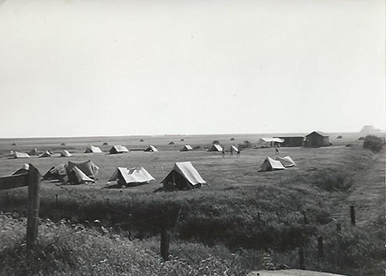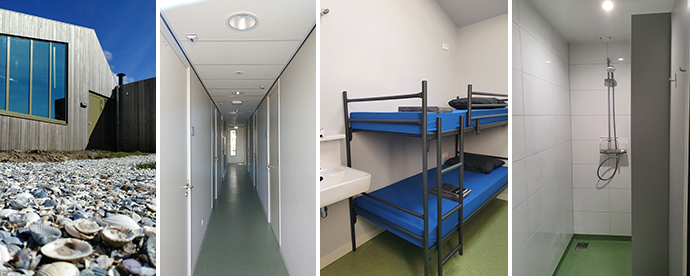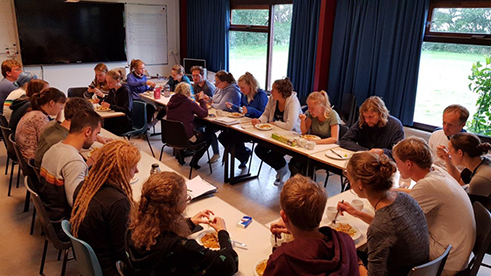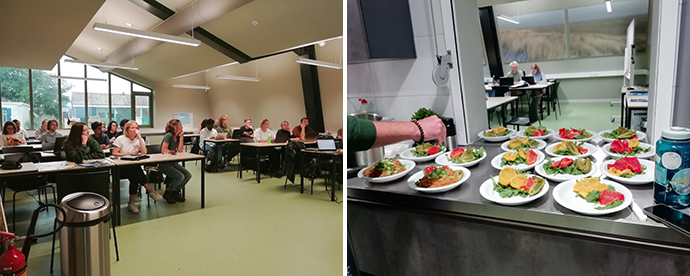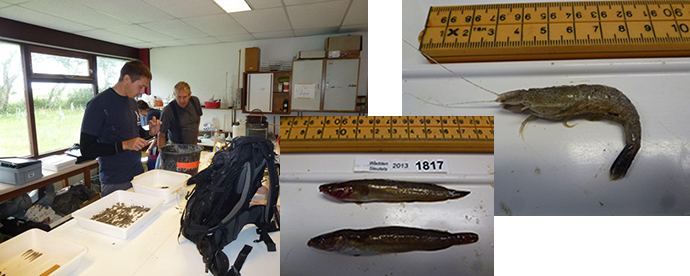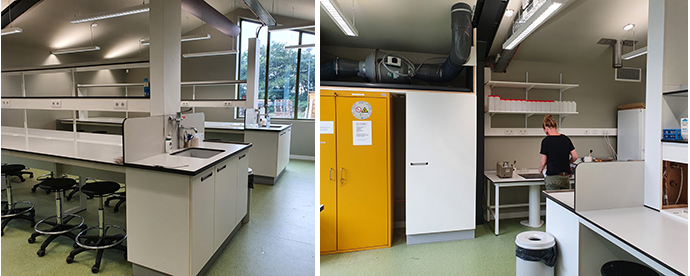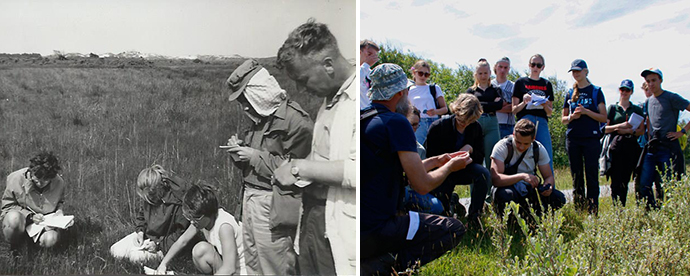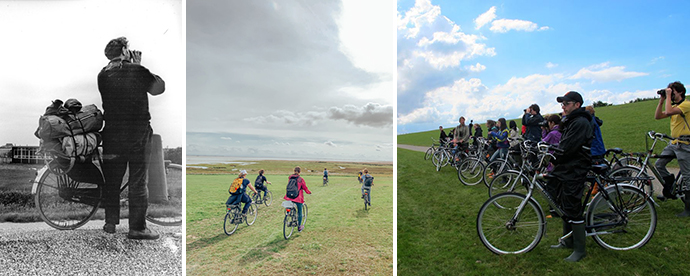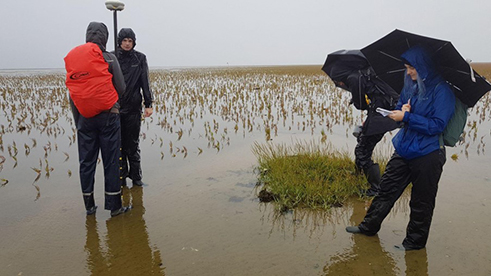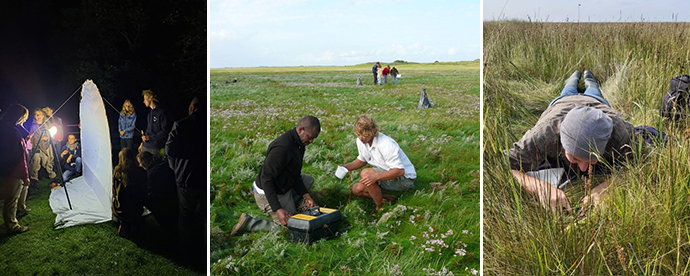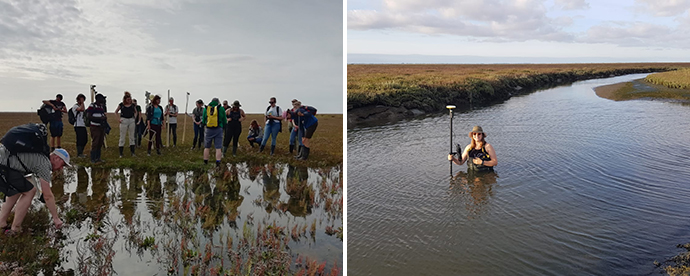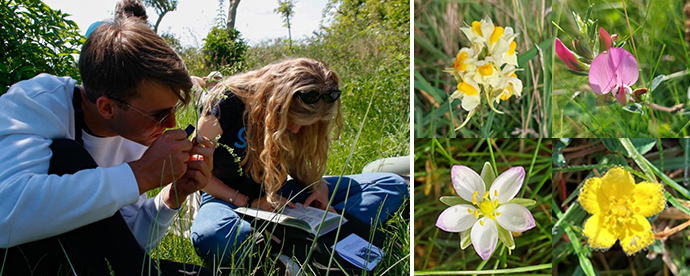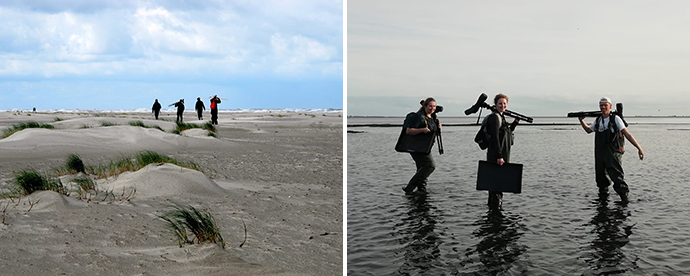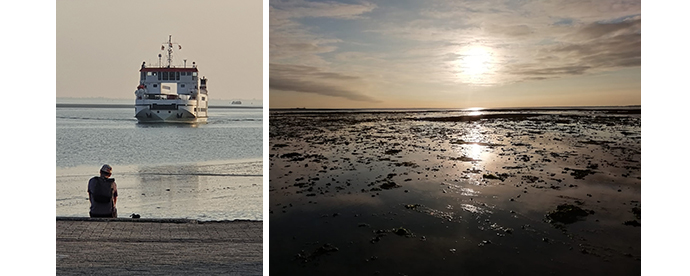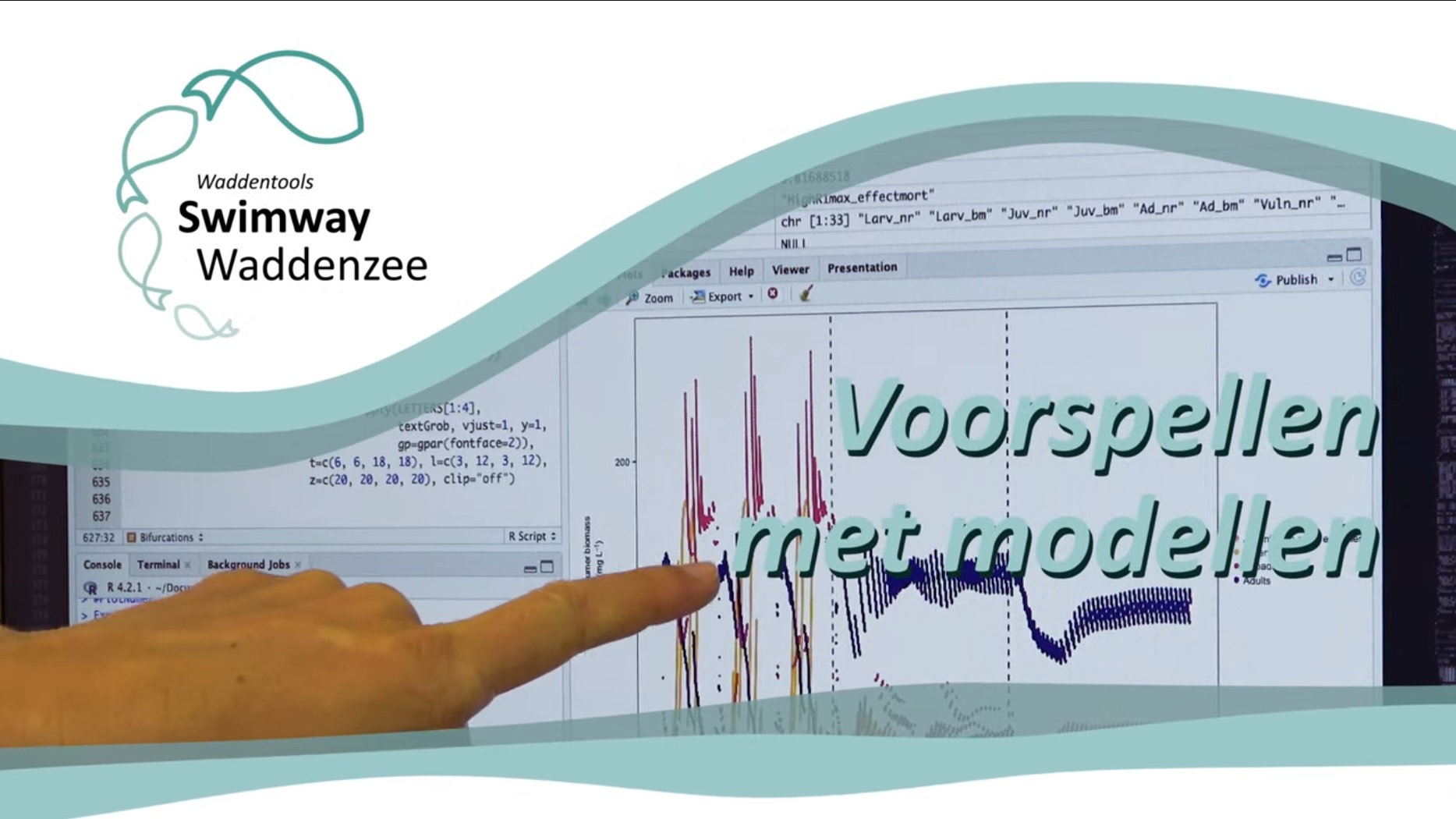Field station 'De Herdershut'
A brief history
Field station ‘De Herdershut’ (the shepherd’s hut) of the University of Groningen on the Wadden Island of Schiermonnikoog is the Netherlands' northernmost scientific research station. The original small shepherd's hut has been used as a base of operations for many, many biology students and researchers since 1958, and now, after renovation, has monument status. The old 'Herdershut', built in 1982, was recently replaced by a modern, sustainable research facility. Details and pictures on the design and constuction, and the festive opening ceremony, are available on this page.
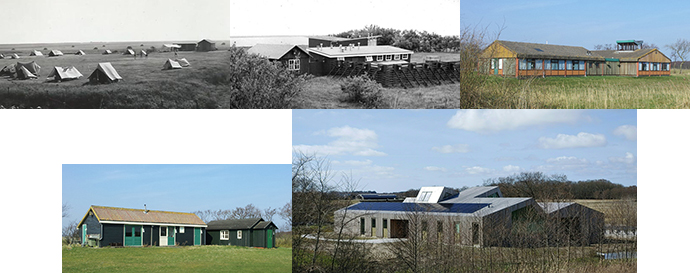
‘De Herdershut’ has produced hundreds of scientific publications and some sixty PhD theses, and was and is home to famous Groningen biologists, such as behavioural biologist Gerard Baerends, animal ecologist Rudi Drent, plant ecologist Dingeman Bakker, and migratory bird ecologist and Spinoza Prize winner Theunis Piersma. From ‘De Herdershut’, research is carried out, sometimes on a long-term basis, on everything related to the ecology of the mud flats: vegetation, grazing, development of the salt marsh, fauna, mussel beds, migratory birds and climate change. 'De Herdershut' is also used as a base for biology and ecology courses for bachelor and master students, and provides facilities for master and PhD students conducting longer-term research projects.
Students at Schiermonnikoog
From the beginning in 1958, teaching biology, especially ecology and marine biology, has brought students to Schiermonnikoog and 'De Herdershut'. A lot has changed since then, but sometimes not so much. Professors still go out with their students, the bicycle remains the main means of transport, and even in bad weather, measurement and collection have to be done. That measuring and collecting is done all over the island, from the meadows, dunes and salt marshes to the mudflats. The collected samples and measurements are processed as much as possible right away, in the labs and the computer room in 'De Herdershut'.
Research in the Wadden Sea
'De Herdershut' is the home base for research in the eastern part of the Wadden Sea, particularly on Schiermonnikoog and bird island Griend. Besides researchers from the UG, the field station also accommodates guest researchers, for example for long-term oystercatcher research by Sovon (Dutch Centre for Field Ornithology), and wader monitoring by Natuurmonumenten (Dutch Society for Nature Conservation). Two long-term research lines of the UG involve spoonbills and seagrass.
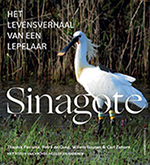
The spoonbill project was initiated decennia ago by Theunis Piersma and Petra de Goeij, and has been occasionally integrated into ongoing projects, for example the former 'Metawad' project (2011-2016), which is to be continued in the new project 'Waakvogels' (sentinel birds). Among many scientific publications, the spoonbill project also resulted in a popular book on the life of Sinagote, a spoonbill born on Vlieland in 2006. The Breton name ‘Sinagote’ means ‘girl from Séné’, the overwintering destination of this spoonbill in southern Brittany.
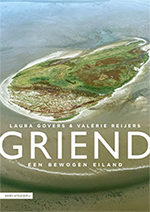
The initial seagras research focused on the restoration of once common, but now seriously endangered seagrass beds on the intertidal mudflats around the small bird island of Griend. This project showed that seagrass can be succesfully restored, and resulted among other things, in a dissertation, two blogs on seagrass restoration and on Griend, a popular book on the ecology and history of Griend, and even a special seagrass beer. The seagrass research is continued in the large project 'Waddenmozaïek' (Wadden mosaic), where one of the subprojects focuses on the restoration of submerged seagrass meadows.
Today, research in the Wadden Sea is often carried out by large consortia, due to the high cost of research vessels and special equipment, and the large research area. The Wadden Fund, regional governments, research institutes and nature conservation organisations are working together to realise a rich, optimally functioning Wadden Sea. This requires an integrated, effective management and recovery strategy, which is being developed within four collaborative projects under the umbrella of 'Wadden Tools'. 'Waakvogels' en 'Waddenmozaïek' are two of them. A third project under the Waddentools umbrella is 'Swimway' that investigates how fish use the Wadden Sea, which problems they encounter, and how management can solve such bottlenecks. Swimway includes several subprojects that are carried out by PhD students, partly based from 'De Herdershut'.

